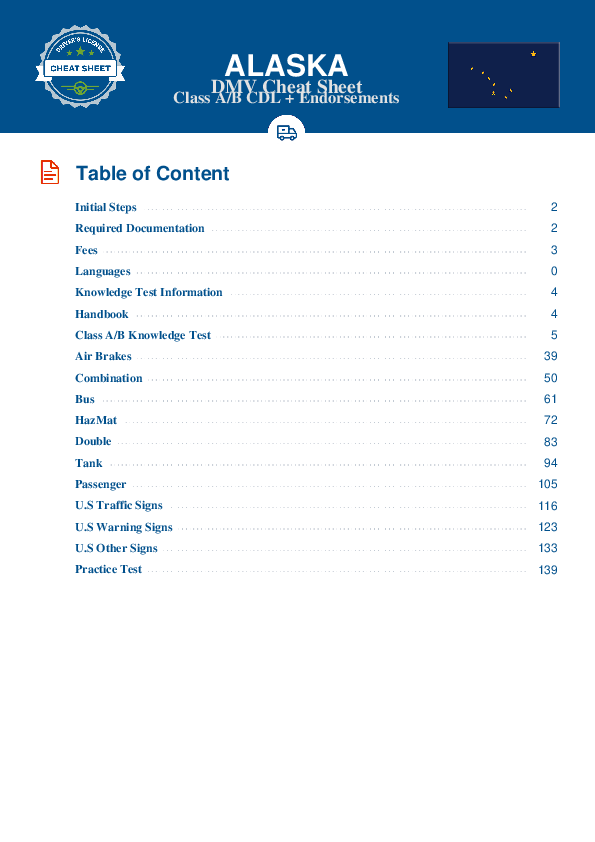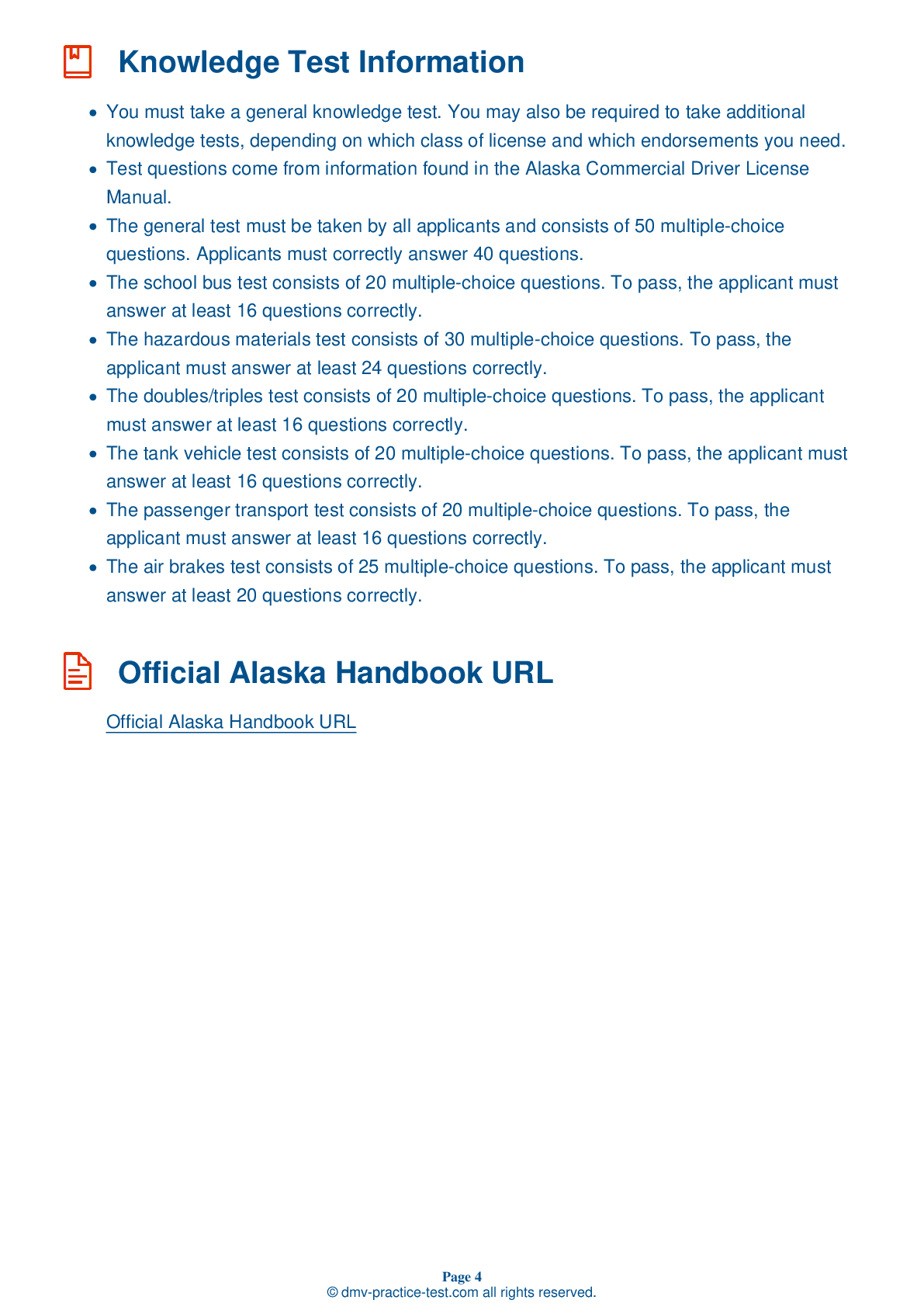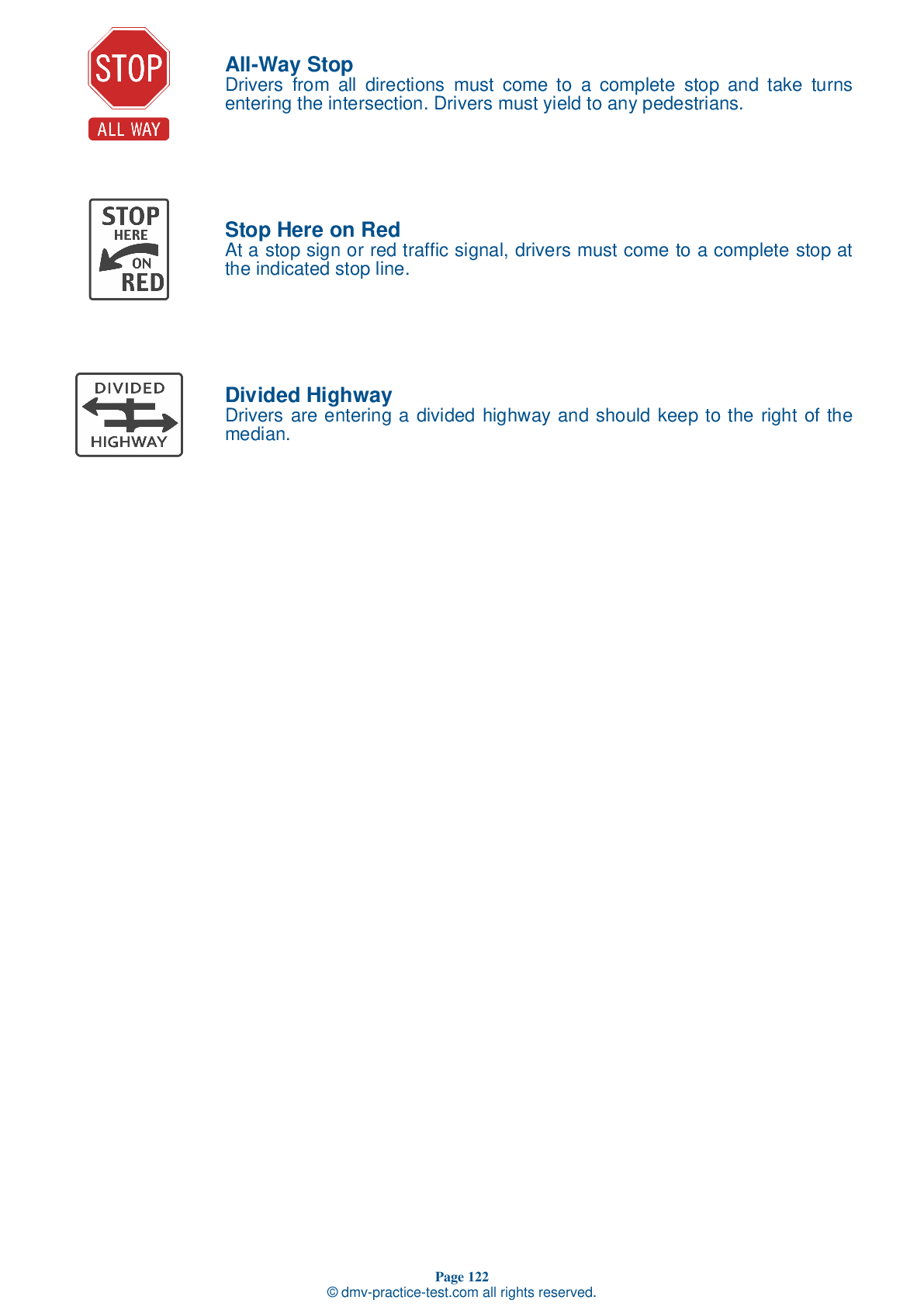Class B Driving Test | Alaska 2025 #2
Train for FREE online with our Alaska class B license test. The official exam test consists of several obligatory parts, with all of them checking your knowledge of different blocks of road rules. If you need to obtain a AK CDL class B permit in 2025, practice as much as possible. Free sample tests published on our website will help you check and improve your knowledge and boost your grades. Please bear in mind that CDL class B requirements may vary from state to state.
1 . Poisonous fumes can enter a cab due to:
A faulty exhaust system is a serious safety hazard. It may allow poisonous fumes to enter the vehicle's cab or sleeper berth.
2 . Which of the following is not a type of tie-down equipment?
You must use the proper number of tie-downs when securing cargo on a flatbed trailer. Examples of tie-down equipment includes ropes, straps, and chains.
3 . If planning to back a vehicle where there may be overhanging objects, a driver should:
Because you can't see everything behind you, driving in reverse is always dangerous and should be done only when necessary. Before backing into an area, you should exit your vehicle and inspect the path of travel to check for potential hazards, especially overhanging objects that would otherwise be difficult to spot in a mirror.
4 . What should you do if the braking system cannot build up hydraulic pressure?
If your hydraulic braking system will not build up the pressure needed to slow or stop your vehicle, there are a few possible solutions. Try shifting into a lower gear, pumping the brakes, and/or using the emergency brake.
5 . When checking your tires as part of the pre-trip inspection, you should look at the:
When checking your tires as part of a pre-trip inspection, it is important to verify that the tire pressure is neither too low nor too high.
6 . You should specifically look out for black ice:
Black ice is a thin layer of ice that is clear enough for the road surface to be seen through it. Be alert to black ice any time the temperature is below freezing and the road surface looks wet.
7 . When traveling at speeds under 40 mph, you should maintain at least ____ of following distance for every 10 feet of your vehicle's length.
When traveling at speeds under 40 mph, you should allow a minimum of one second of following distance for every 10 feet of your vehicle's length. At faster speeds, add at least one additional second.
See the exact questions that will be on the 2025 Alaska DMV exam.
99.2% of people who use the cheat sheet pass the FIRST TIME
Lillian MCcranie explains how our CDL study guide was helpful in passing the exam and recommends it to everyone.
Cameron tells us how he purchased the CDL exam, and found it to be a useful tool which helped him pass the exam and find a job.



